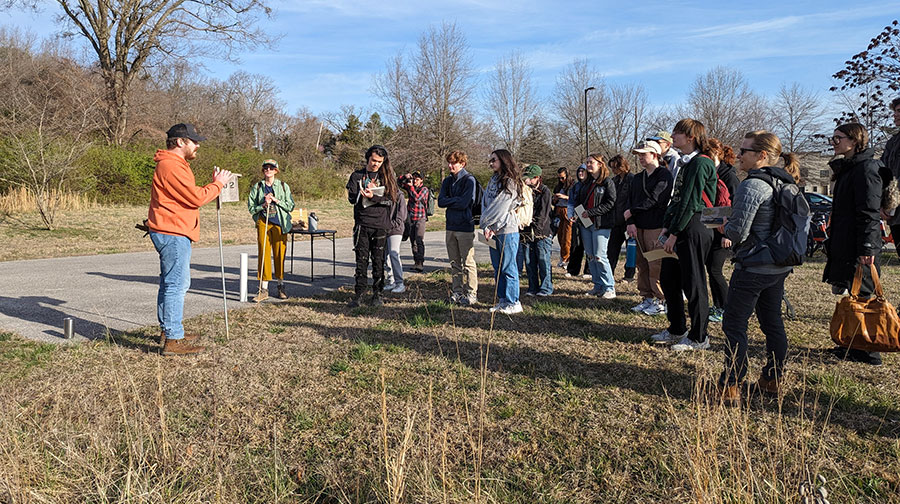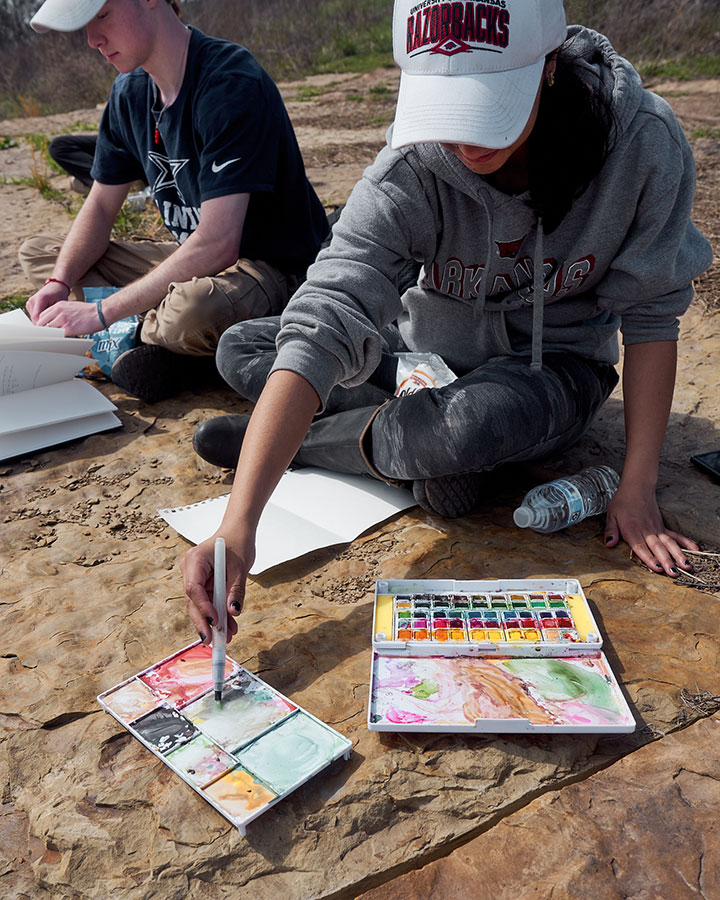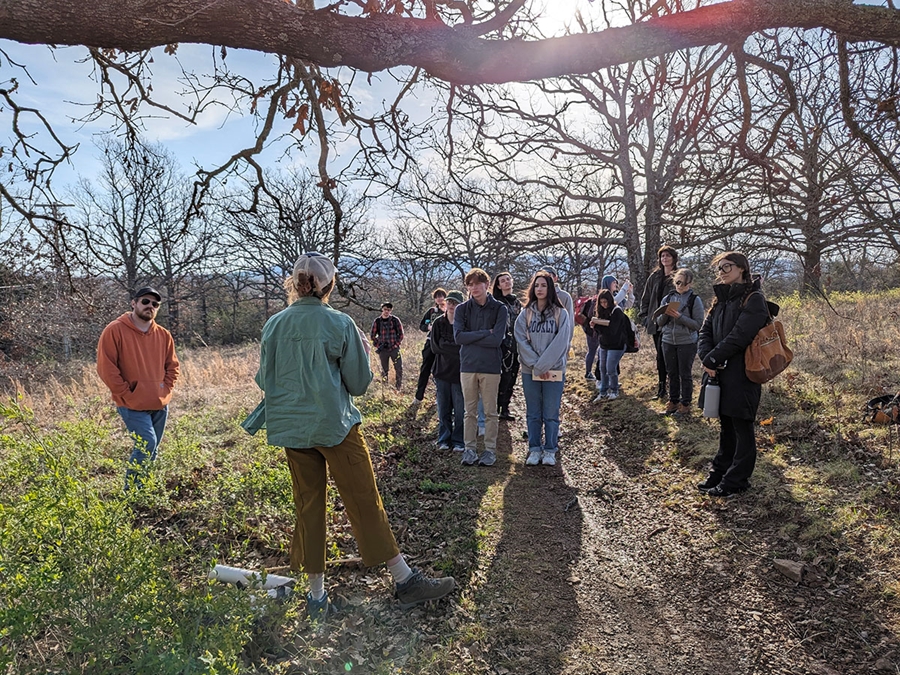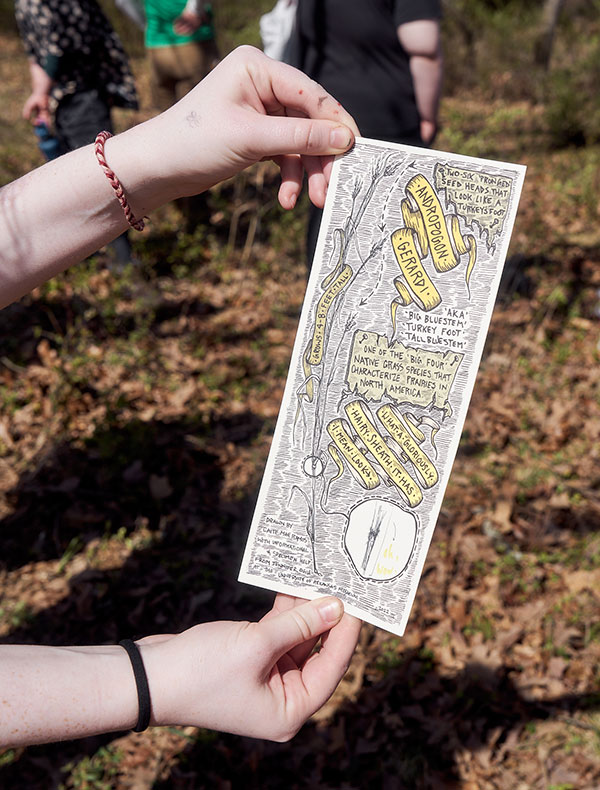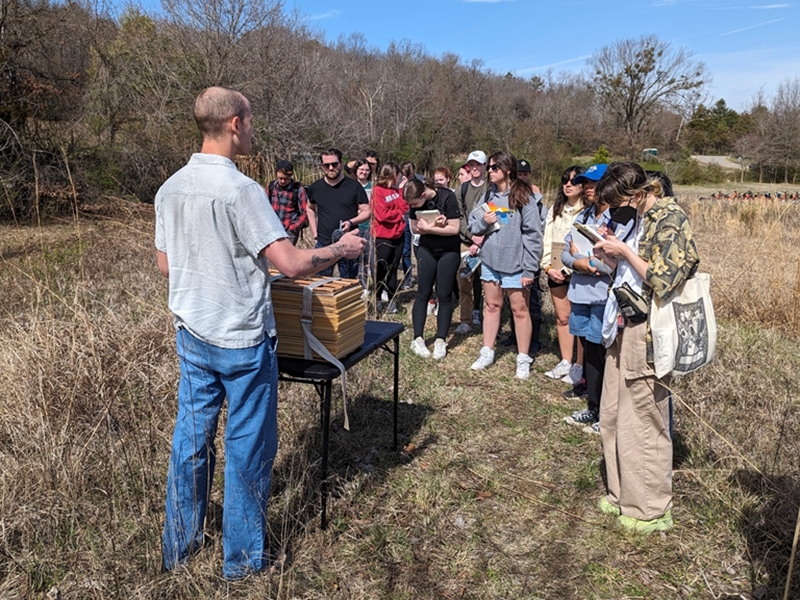
When Jean Schmitt first learned about Oak Knoll, a 56-acre remnant ecosystem south of campus that contains an intact prairie and oak savanna, she was immediately captivated by its potential to offer learning opportunities for a variety of disciplines at the U of A, including her own discipline of art.
“Nature is the ultimate aesthetic experience. It provides a multisensory experience that activates the brain like no other,” Schmitt said. “Connecting across disciplines, understanding ourselves as artists and designers in connection with our world, and building knowledge from the ground up — these ideas are foundational.”
Schmitt, an assistant professor of foundations for the School of Art, also saw the prairie as a way for students to examine value from many different perspectives, looking into both the past and the future. Value was more than an abstract notion for one of her foundation courses, titled Image and Design. In one project students design currency for a future society reshaped by climate change.
Schmitt was inspired to make this site the heart of the currency design project. “With an interest in experiential education, I thought: ‘How can I connect students with this land and this community that cares so much about it?’” she asked. “It was irresistible.”
Field Trip to Oak Knoll
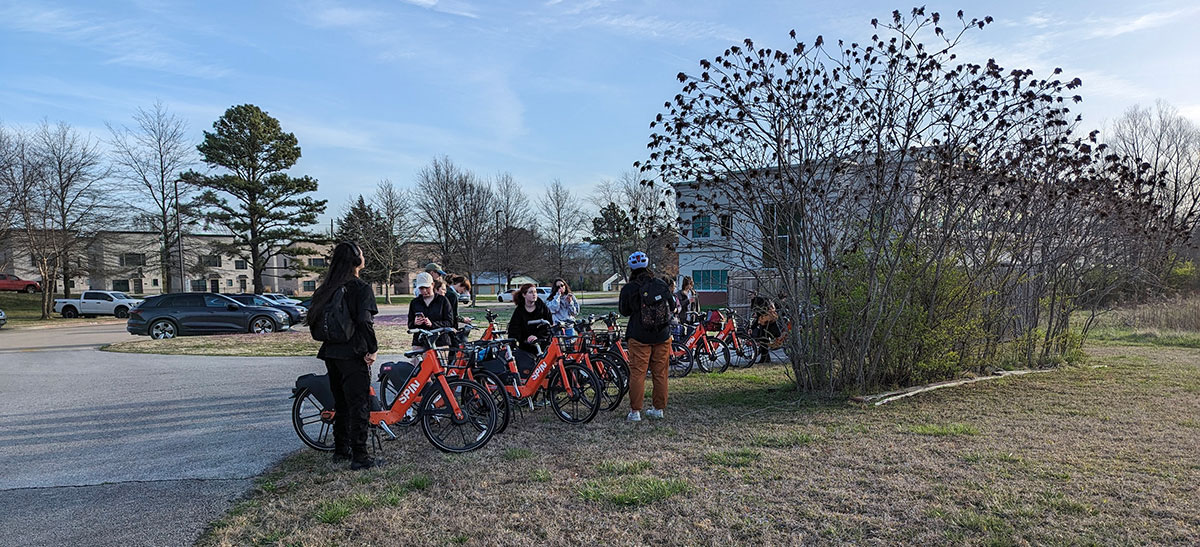
School of Art students arrive at the Oak Knoll remnant prairie via Spin e-bicycles. Photo courtesy of Jennifer Ogle
The School of Art’s new design campus sits alongside the Tsa La Gi Trail, which connects with the Razorback Greenway and runs south through the remnant prairie. The bicycle route gave art students a convenient and pleasant path to access Oak Knoll by e-bike. For many students, their trip to the Oak Knoll was their first time riding e-bikes provided by Spin, an e-bike rental company. Through Spin’s ongoing partnership with the U of A, they generously made the 20 e-bikes available for the class field trip at no expense to the students.
“As with any field trip, there was the question of how we would access the Oak Knoll site,” said Emma Armendariz, active transportation coordinator for the U of A. “Riding the Spin e-bikes along the Greenway allowed students to try something new and see Fayetteville from a different perspective. Fayetteville’s challenging topography has historically given way to a very car-centric culture. Using e-bikes was a subtle way to encourage students to think differently about how we get from point A to point B.”
Exploring Land and Connections
With their course’s currency design project in mind, students explored the prairie and savanna through the lenses of an artist, a scientist and an environmentalist.
The Oak Knoll is home to several naturally occurring habitats, including a tallgrass prairie, oak savanna, forested and open wetlands, and a large stream. Once prevalent in Northwest Arkansas, the prairie and savanna landscapes have largely disappeared due to agricultural and urban development. Though fragmented, the remnant contains a diversity of plant species and represents the native Ozark floral and faunal landscapes that were once widespread across Northwest Arkansas.
Plant species present throughout the property are vital to the survival of certain pollinators and grassland birds. Jennifer Ogle, botanist and collections manager of the U of A Herbarium, emphasized the value of native plants, framing them as the backbone of a healthy ecosystem. She also discussed the importance of documenting the native plant species present at the site. The rich ecosystem at the site is a true jewel of campus and provides students with a unique immersive learning experience.
Schmitt’s foundations students were inspired by the range of U of A students studying the prairie:
-
Caite Ramos, an M.F.A. student whose sculpture and illustration work invites viewers to connect with prairie plants as a way of thinking differently about the land around us;
-
Willa Thomason, a recent graduate from the Department of Geosciences master's program who shared a look back in time by coring oaks to date the trees;
-
Andrew Ruegsegger, an undergraduate student studying anthropology and botany who shared about plant collecting and pressing to document the flora of the site; and
-
William Kirkpatrick, a doctoral candidate in the Department of Biological Sciences who shared his bluebird nesting study with students.
“This collaboration warms my heart,” said Eric Boles, director of the Office for Sustainability. “We were able to provide an immersive experience for the students that has expanded their horizons. The combination of a guided bike ride on the Greenway trails, a walk into an ancient ecosystem, followed by hands-on learning provided by amazing experts, and all viewed through the lens of art and design is a unique experience that can only be found at the U of A.”
About the Office for Sustainability: The mission of the University of Arkansas Office for Sustainability is to motivate, facilitate and coordinate responsible practices through partnerships with students, faculty, and staff across all campus departments. The OFS uses the campus as a living laboratory by overseeing the implementation of the University of Arkansas environmental goals.
Topics
Contacts
Jean Schmitt, assistant professor
School of Art
479-575-4801, jeans@uark.edu
Jennifer Ogle, manager, Herbarium Collections
Department of Biological Sciences
479-575-4372, jogle@uark.edu
Emma Armendariz, active transportation coordinator
Office for Sustainability
479-575-7101, erarmend@uark.edu
